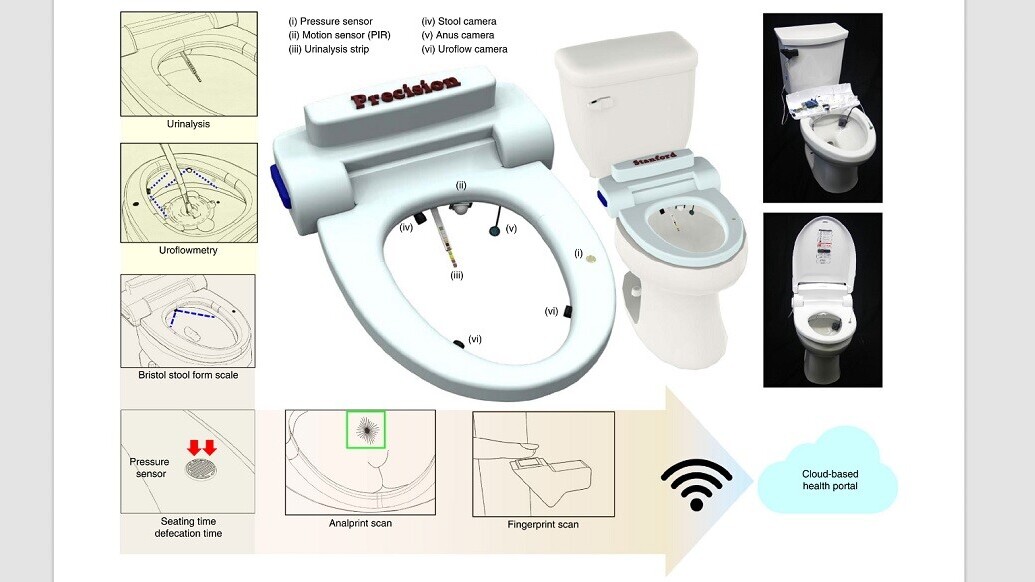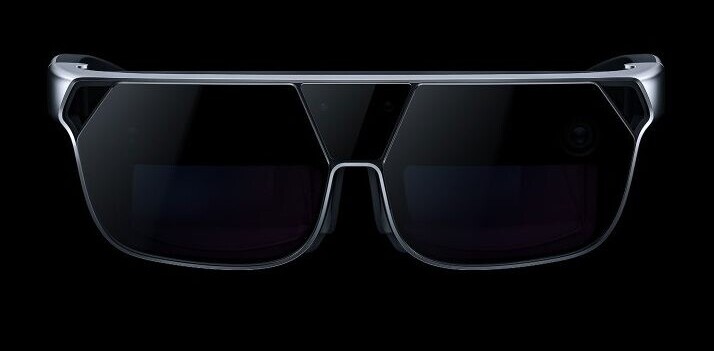
An international team of researchers recently developed a fully automated sensor package that turns any regular toilet into the Tesla Model S of commodes.
Designed to monitor your health, the system comes complete with nearly a dozen sensors that can do everything from perform an on-site specimen exam (it checks your poop and urine for things like consistency, color, and glucose and red blood cell count) to time your movements. And it even has built-in cameras and a fingerprint sensor for security purposes.
We were going to take an in-depth dive into the myriad medical conditions this potentially life-saving and much-needed device could be used to diagnose. Then I saw the following diagram in the team’s paper (yellow arrow added by TNW):

And, despite my best journalistic instincts, I sort of focused in on the mysterious “analprinting” sensor:

First, we ruled this out as an April Fool’s Day joke. The paper this diagram came from was submitted to Nature in December of 2019 and published on 6 April. It seems legit. According to the research, this is a two-factor identification method when combined with fingerprinting:
Our system also uses fingerprinting and a distinctive method of using anal creases (the distinctive feature of the anoderm, referred to here as analprint) as biometric identifiers to securely associate the collected data with the user’s identity.
Seriously, we’re not making this up. The researchers are proposing two-factor authentication featuring your finger and your ass. Here’s another snippet from the study:
Another identification method—utilizing the analprint, which is user-specific—was therefore designed and implemented into the toilet system. A scanner was installed to record a short video clip of the user’s anus. The ROI—the anus—was then identified using an image recognition algorithm.
Just think about it: somewhere, an AI had to spend hundreds or thousands of hours training its models on pictures of who-knows-how-many human anuses so it could learn to get good enough at this job to do it in the wild. Remember that when the machines rise up.
As it turns out though, we might not see the analprint scanner in a future commercial version of the smart toilet. The researchers discovered that people don’t seem to enjoy having their analprint taken. Per the study (emphasis TNW’s):
The vast majority of the concerns of participants were regarding privacy protection and data security enactment in the toilet system. Interestingly, we observed a statistically significant preference of non-camera-based modules (the urinalysis and fingerprint modules over uroflowmetry, stool analysis and analprint modules combined; P < 0.0001, two-sample t-test). The most accepted module is urinalysis, whereas the least favored module is analprint.
File that under: did they really need to do science to figure that part out?
Also of note, the researchers determined that gender played no role in participants’ preferences… except when it came to poop. Those who identified as women were less “favorable” to the stool sample module than those who identified as men.
Alright, there’s a lot going on in this story but the bottom line is that this toilet is a good thing. As far as our health is concerned, we’re literally flushing some of the most medically valuable data we could possibly produce down the toilet every day. If we could somehow harness the power of that poop as a diagnostic factor, it could potentially change the course of human life-expectancy within a generation.
Still, I don’t know about analprinting. Maybe we could use this technology that uses our seated butt-stance as a biometric marker instead?
Get the TNW newsletter
Get the most important tech news in your inbox each week.




